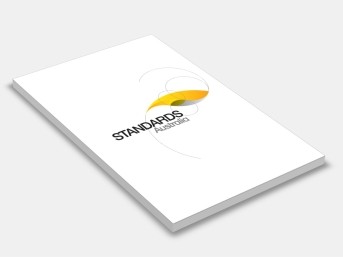AS/NZS 4020:2005 Testing of products for use in contact with drinking water
Standards Australia/Standards New Zealand
In preparing this Standard, consideration has been given to comparable overseas Standards, to minimize duplication of effort and to maintain commonality, wherever reasonable, with those Standards. Particular consideration has been given to the various parts of BS 6920, Suitability of non-metallic products for use in contact with water intended for human consumption with regard to their effect on the quality of the water. Several of the test procedures and criteria given in BS 6920 have been adopted or modified for Australian and New Zealand requirements.
This Standard departs from BS 6920 as follows:
(a) This Standard provides a method of testing for the leaching of compounds that may produce a mutagenic effect.
(b) The requirement for products to be tested at surface area-to-volume ratios that are not less than those in the intended end-use exposure (with the exception of the test forgrowth of aquatic micro-organisms). Where there is a difference between test and end-use exposures, provision is made for a scaling factor to be applied to the test
result.
(c) The inclusion of testing for metals extracted from metal products that are often components of products in contact with drinking water.
Significant changes from the previous edition include the following:
(i) Inclusion of a colorimetric method for determination of cytotoxic activity.
(ii) Inclusion of an appendix on the structure of test reports.
(iii) Revision of the appendix on product submission information.
(iv) Altered requirements for testing non-metallic products for leaching of metals.
The terms ‘normative’ and ‘informative’ have been used in this Standard to define the application of the appendices to which they apply. A ‘normative’ appendix is an integral part of a Standard, whereas an ‘informative’ appendix is for information and guidance only.
Originated as AS 3855(Int)-1991. Previous edition AS/NZS 4020:2002. Fifth edition 2005.
Contents:
Foreword
1: Scope
2: Referenced Documents
3: Definitions
4: Test Samples
5: Scaling Factors
6: Test Requirements
7: Hot Water Tests
Appendix A: Sample Preparation
Appendix B: Scaling Factors—Derivation And Application
Appendix C: Test Method—Taste Of Water Extract
Appendix D: Test Method—Appearance Of Water Extract
Appendix E Test Method—Growth Of Aquatic Micro-Organisms:
Appendix F: Test Method—Cytotoxic Activity Of Water Extract
Appendix G: Test Method—Mutagenic Activity Of Water Extract
Appendix H Test Method—Extraction Of Metals:
Appendix I: Test Method—Extraction Procedures For End-Of-Line Fittings
Appendix J: High Temperature Tests
Appendix K: Test Method—Sample Extraction Procedure For Use With Water-Heating Systems
Appendix L: Product Submission Information
Appendix M: Simulated Samples
Appendix N: Test Report
Materials In Contact With Drinking Water.
